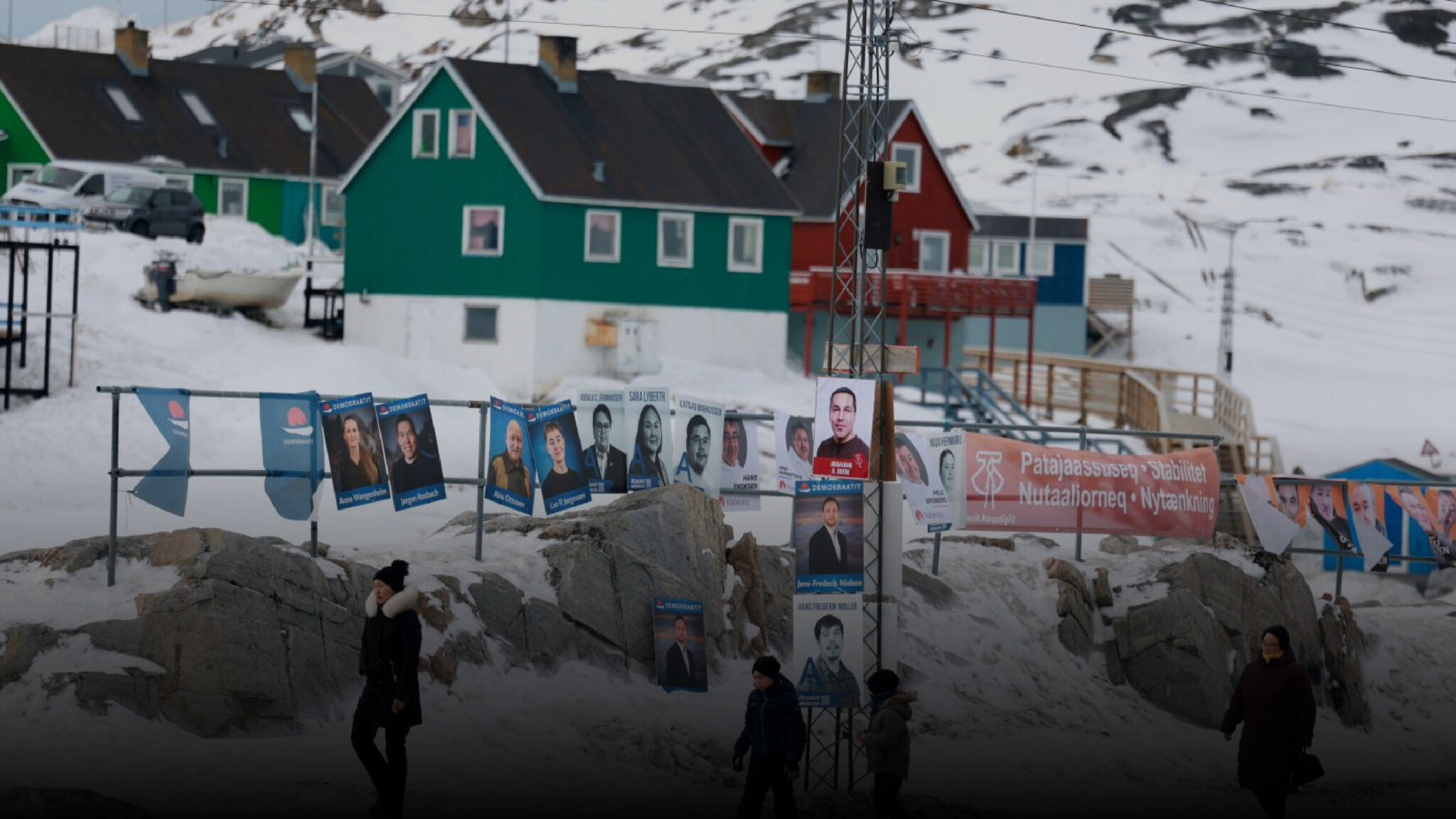
The center-right Democrats have defeated the governing left-wing coalition in Greenland’s election, while a pro-U.S. party recorded its best ever result in the vote on Tuesday. Voters came out in droves, with turnout increasing significantly compared to 2021, according to local media.
Demokraatit, a pro-business, social liberal party, unexpectedly came in first place with 29.9% of the vote in the autonomous territory of 56,000 people. The party, which supports independence from Denmark, but only gradually and once the self-ruling territory is more economically developed, more than trebled their support from 9.1% in the previous election.
Enjoy independent, ad-free journalism - delivered to your inbox each week
But in a sign of deep divisions, the night’s other big winner was the Naleraq party, which doubled its vote share from 2021. They want a snap referendum on separating from Denmark and favor closer ties with the United States, including a potential free association agreement.
Meanwhile, the left-wing Inuit Ataqatigiit (IA) and center-left Siumut, which governed the island in a coalition, came in third and fourth, with 22% and 15% respectively. With no party having won a majority of the 31 seats, leaders will next head into coalition talks to negotiate the formation of the next government.
Mr Trump loomed large over the election campaign amid a debate about the island’s independence. He has long wanted Greenland to be part of the US, having stated his desire to gain control of the country in his first term and saying again earlier this year that he wants to purchase it. He reiterated this position ahead of the election, stating that “The United States of America feels that the ownership and control of Greenland is an absolute necessity” for “purposes of national security”. He refused to rule out the use of force, telling Congress earlier this month that, “[o]ne way or the other we’re gonna get it”. Greenlanders could, Mr Trump said, become “a part of the greatest nation anywhere in the world”. In comments on his Truth Social platform ahead of Tuesday’s ballot he told Greenlanders that he was ready to invest billions “and make you rich”.
These remarks energized the debate over Greenland’s future, including whether it should remain part of Denmark, seek full independence, or enter into an arrangement with the U.S. After three centuries of Danish rule, the territory was granted broad autonomy in 1979, though Copenhagen retains control over foreign policy and defense. In 2009 Denmark granted the Greenlanders the right to declare independence should its people choose such an option in a referendum.
Opinion polls suggest around two-thirds of the islanders support independence, but they remain divided over its timing and impact on living standards. Most residents favour a slow approach, perhaps unsurprisingly given that Greenland depends on a block grant from Copenhagen for about half of its budget. This, in turn, finances much of the island’s employment, health care, and education. Denmark also granted the territory control of its own natural resources in 2009, though as its revenues go up, its block grant from the Danish kingdom goes down.
Few Greenlanders are thought to support an outright American takeover, but many sense an opportunity to harness Mr Trump’s interest into greater autonomy and development. An opinion survey from December 2024 shows that nearly 60% of Greenlanders wants closer co-operation with the US, with whom there is an increasing desire to strike a free trade agreement. This is possible without full independence, given that Greenland left the then-European Economic Community (today’s EU) back in 1985 and so can strike its own trade deals. American investment in rare-earths mining is particularly sought after to help wean the economy off of Danish subsidies. Many Greenlanders also feel that Denmark has not done enough to invest in protecting the island, and that closer security cooperation with America (which already has a military base on the territory’s north-west coast) could be beneficial.
Mr Trump would like more, namely to buy the territory outright, much as Thomas Jefferson purchased Louisiana in 1803 (doubling the size of America in the process) and William Seward acquired Alaska from Russia in 1867. His interest in it is twofold. Geopolitically, the vast island sits between America and Russia in a part of the world that is becoming more navigable as Arctic ice melts. The shortest route for Russian nuclear missiles to reach America’s east coast also goes right over it, and America’s Pituffik Space Base on the north-west coast already hosts missile-warning sensors. An American (or more heavily American-aligned) Greenland might better monitor the Greenland-Iceland-UK (GIUK) gap, a strip of the Atlantic that is the access route for Russian submarines to the North Atlantic and America’s east coast.
On top of this, Greenland has massive resource wealth. It has known reserves of 43 of the 50 minerals deemed “critical” by America’s government, including what are probably the largest deposits of rare earths outside China. These are crucial to military kit as well as everything from magnets to microchips. Wells in Greenland’s coastal waters are also thought to hold 52bn barrels of oil, or about 3% of the world’s proven reserves, according to an estimate by the US Geological Survey. These resources have gone largely unexploited so far owing to the difficulty of operating in the territory’s harsh environment: 80% of the island is covered by ice, and many settlements are unconnected by roads. But as the climate warms, the minerals become both more reachable. Interest in developing them is already climbing fast: mining companies are now drilling at 170 sites, up from 12 a decade ago.
This means that a deal to acquire Greenland would plausibly increase American security, and perhaps that of its NATO allies, too. And such a purchase could also benefit the inhabitants of the island economically. But respecting Greenland’s right to self-determination means respecting the right of its incoming government to decide whether they want to accept Mr Trump’s offer to purchase the island, which could be put to a referendum, or pursue something more like the “Compacts of Free Association” which the US already has with states like Micronesia in the Pacific. For the choice to be free, and for America’s allies to be reassured, President Trump should rule out the use of force.
The leader of the victorious Democrats, Jens-Frederik Nielsen, has said that Greenland is not for sale and rebuffed President Trump’s interest in annexing it, calling the overtures “a threat to our political independence” in response to a recent bill banning foreign contributions to political parties. “We must defend ourselves”, he added. “I hope it sends a clear message to him that we are not for sale”, Mr Nielsen told Sky news. “We don’t want to be Americans. No, we don’t want to be Danes. We want to be Greenlanders. And we want our own independence in the future. And we want to build our own country by ourselves, not with his hope.”

Comments (0)
Only supporting or founding members can comment on our articles.